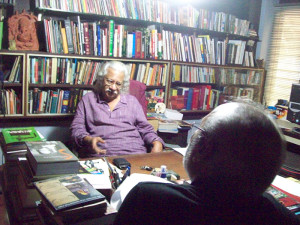Two novels about a young Bengali and their adaptation as a screen trilogy made waves in the fifties in India. A vast number of readers and spectators identified with young Apu, who had a strong relationship with his mother and was an advocate of his own education. The trilogy describes the boy’s
coming-of-age in the 20th century.
Film historian Ashok Rane traces the phenomenon and the fascination which the trilogy exerted on spectators, and still does. It consists of ‘Pather Panchali’, ‘Aparajito’ and ‘Apur Sansar’. He talks to the actors who played Apu as well as with successful filmmakers and the author of the novels about their experiences and how they perceived Apu’s character.
The trilogy is listed among the greatest films of all time and won many national and international awards, including three National Film Awards in India and seven awards from the Cannes, Berlin and Venice film festivals.
Donnerstag, 5. Februar 2015; 18:30h -Saal 2 – IndoGerman Filmweek – Deutschlandpremiere: Being with Apu, Dokumentation, Indien 2012, Regie: Ashok Rane, 39 Min, OmeU, anschl. Gespräch mit dem Regisseur Ashok Rane (Direktor der Indian Film Academy) über das Phänomen der Apu-Trilogie; Eintritt: 5 Euro
In seinem Dokumentarfilm “Being with Apu” untersucht der Regisseur Ashok Rane das Phänomen einer Faszination, die die Filmtrilogie “Apu” des indischen Regisseurs Satyajit Ray, bis heute auf Zuschauer hat und die es zu einer der wichtigsten Filmreihen der Filmgeschichte gebracht hat.
In Gesprächen mit den Schauspielern, die Apu gespielt haben und mit namhaften indischen Filmemachern, erfahren wir, wie sie den Charakter Apu wahrgenommen haben. Dabei wird durch ihre Aussagen und an vielen Filmbeispielen deutlich, dass Satyajit Ray in dem Portrait einen bengalischen Jungen von der Kindheit ins Erwachsenenalter, ein klassisches, über Zeiten und Länder hinweg gültiges Bild kreiert hat.
